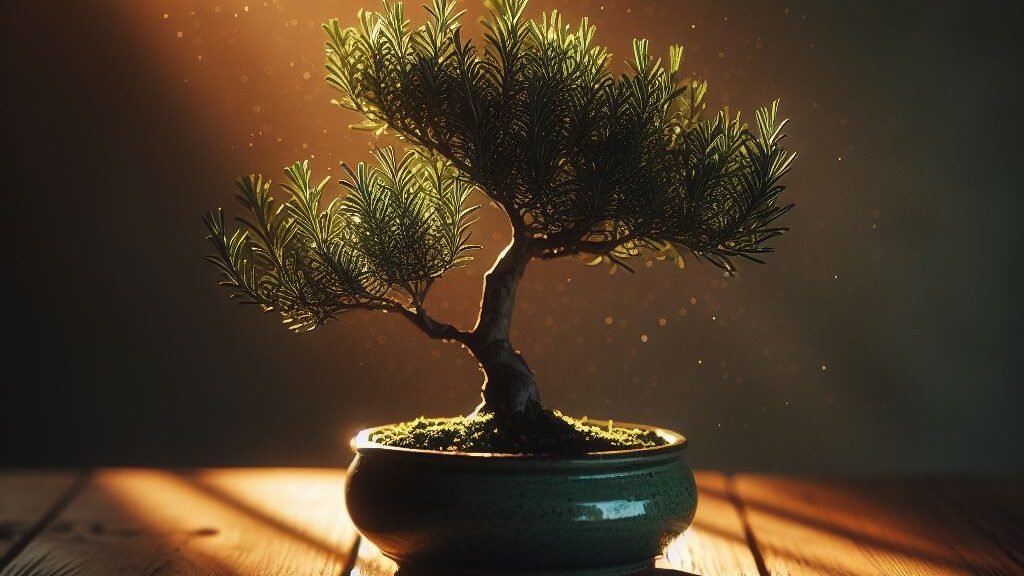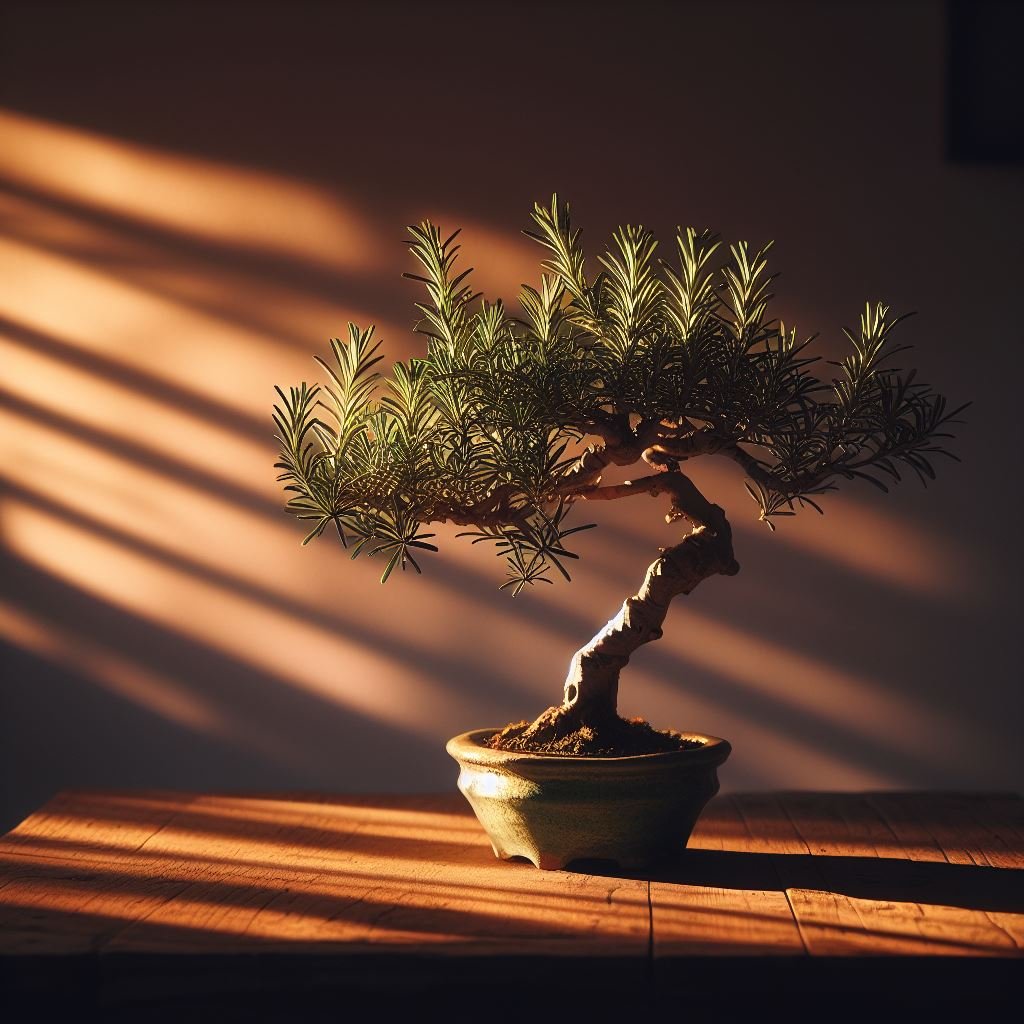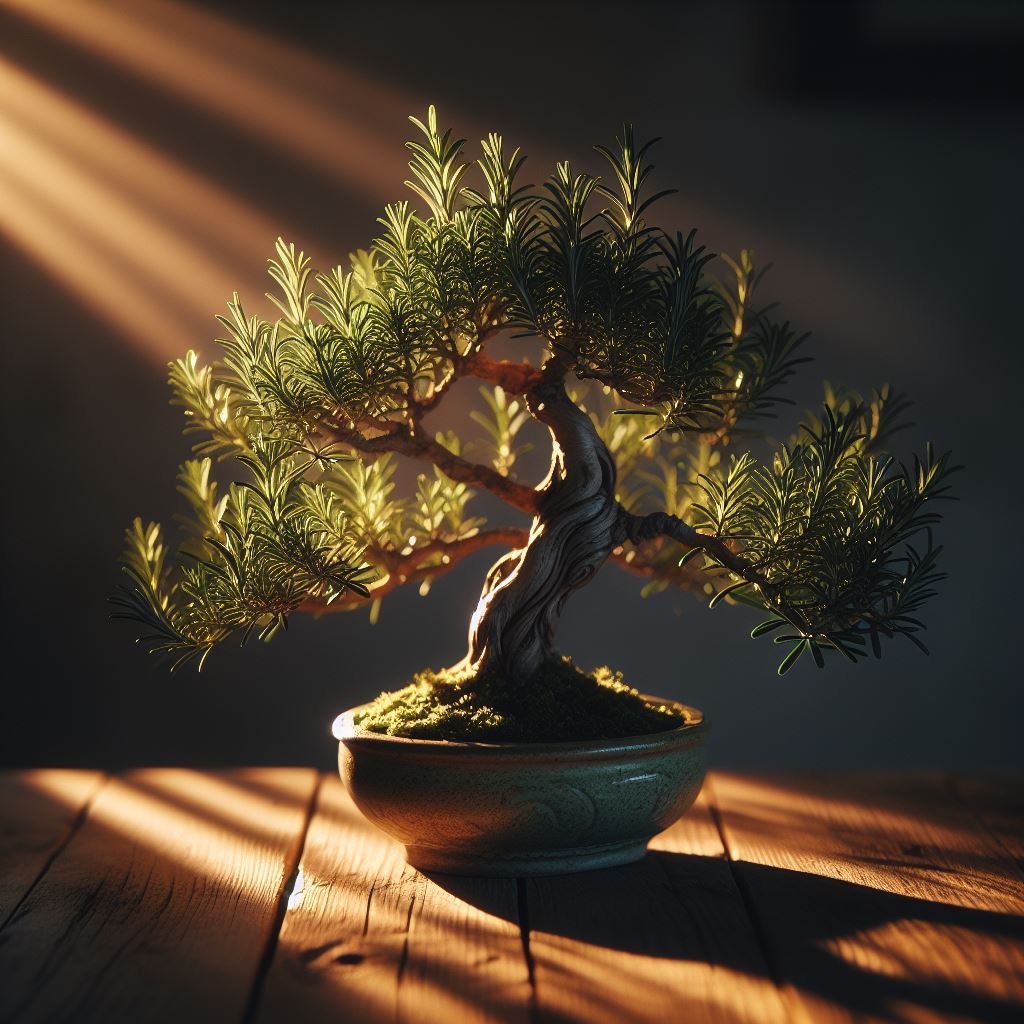The beauty and charm of bonsai trees have captivated gardeners and nature enthusiasts for centuries. Among the diverse range of bonsai trees, the rosemary bonsai tree stands out with its unique fragrance, culinary versatility, and symbolic significance. In this blog post, we’ll explore the art of growing, caring for, and utilizing the majestic rosemary bonsai tree.
Introduction

The rosemary bonsai tree, with its delicate foliage and aromatic scent, brings a touch of elegance and serenity to any space. As a miniature representation of a full-sized rosemary plant, this bonsai variety offers a plethora of benefits, from its aesthetic appeal to its culinary uses. Let’s dive into the world of the rosemary bonsai tree and discover the joys of cultivating and nurturing this remarkable bonsai.
Growing and Caring for a Rosemary Bonsai Tree
Growing and caring for a Rosemary Bonsai tree, also known as Rosmarinus Officinalis, requires specific knowledge and care due to the plant’s unique needs.
Firstly, selecting an appropriate location for your rosemary bonsai tree is crucial. It thrives in a spot that receives plenty of sunlight1. Additionally, it appreciates being kept outdoors during the spring and summer months, but can also thrive indoors in high light2.

The soil composition is another important aspect to consider. A mix of two-thirds commercial potting soil and one-third perlite creates an ideal growing medium for your rosemary3. Use a clay pot to house your plant for optimal growth.
Watering is key to the health of your rosemary bonsai. During its growth period in the warmer months, the soil should be kept evenly moist but never soggy4.
Pruning and styling are also part of caring for a rosemary bonsai. You may cut off the growing tips of the tall, upright branches every 6 to 8 weeks, but avoid continuous “pinching.” Let new shoots grow 10 to 20 cm before pruning5.
Fertilizing your plant is recommended. A slow-release (pellet-based) fertilizer is perfect for this, and can be added sparingly every 1-2 months during the growing season6. However, if you plan on eating the rosemary, ensure the fertilizer is suitable for edible plants.
Lastly, monitor your plant for pests and diseases. Indoor rosemary bonsai should have 12 hours of light per day and be fertilized with a diluted 20-20-20 fertilizer every two weeks7.
In conclusion, with the right care and attention, your rosemary bonsai can flourish and become a beautiful addition to your home or garden.
Footnotes
- A-Z Animals ↩
- Bonsai Boy ↩
- Bonsai Resource Center ↩
- Jackson and Perkins ↩
- I Bonsai Club ↩
- Love My Bonsai ↩
- Weekend ↩
Benefits of Having a Rosemary Bonsai Tree
Beyond its aesthetic appeal, the rosemary bonsai tree offers numerous benefits that make it a valuable addition to any collection or garden:

- Aesthetics and indoor decor: The elegant form and fragrant foliage of the rosemary bonsai tree enhance the beauty of any indoor space or garden.
- Aromatherapy and relaxation: Breathe in the soothing aroma of rosemary, known for its calming and stress-relieving properties. Place your rosemary bonsai tree in areas where you can enjoy its aromatic presence.
- Culinary uses: Harvesting rosemary leaves from your bonsai tree allows you to infuse your culinary creations with fresh, homegrown flavor. Rosemary is a versatile herb that adds depth and fragrance to a wide range of dishes.
History and Symbolism of the Rosemary Bonsai Tree
Rosemary bonsai, or Rosemarinus Officinalis, has its roots in the Mediterranean region. The plant is highly valued for its medicinal, culinary, and ornamental purposes, and is cultivated worldwide1.
Rosemary bonsai is symbolic and carries a deep meaning. It’s known as the “Tree of Remembrance” due to its association with memory and recall2. This symbolism dates back to ancient times and is still recognized today.

The rosemary plant is strongly aromatic with an evergreen structure, small abundant leaves, and pale violet flowers2. It is not only pleasing to the eye but also adds a delightful fragrance to its surroundings.
In addition to its beauty, rosemary is celebrated for its flavor. Many gardeners grow rosemary not just for its aesthetic appeal, but also for its culinary uses3. From your search results, it’s clear that you can use other herbs for bonsai as well, such as thyme, lavender, sage, and oregano4.
Moreover, the age of a rosemary bonsai tree can be denoted by its bark and dead wood. Over the years, these elements form a unique sculpture that signifies the character and age of the plant5.
In conclusion, the rosemary bonsai tree is more than just a plant. It’s a symbol of remembrance, a source of flavor, and a piece of living art.
Footnotes
- CABI Compendium ↩
- Bonsai Direct ↩ ↩2
- Redlands Daily Facts ↩
- Bonsai Empire ↩
- Deus Bonsai ↩
- Laidback Gardener ↩
Using Rosemary from Your Bonsai Tree in Cooking
Rosemary from your bonsai tree can be used in cooking. It’s a great way to add a fresh, aromatic touch to your dishes. However, there are a few things to keep in mind.
Firstly, rosemary bonsai trees, like any other bonsai, require careful cultivation. They may not produce as much harvestable rosemary as a full-sized plant, so you’ll want to prune sparingly and allow the plant time to recover between harvests.
When harvesting, use clean, sharp shears or scissors to cut off the sprigs. Always leave at least two-thirds of the plant intact to ensure it continues to thrive.

Before using the rosemary in cooking, rinse the sprigs under cold water and pat them dry. You can then strip the leaves from the stem and chop them if necessary. Fresh rosemary is quite potent, so start with a small amount and adjust to taste.
Remember to consider the health of your bonsai tree. If it’s been recently fertilized, you might want to give it a little time before using its leaves for cooking. Also, avoid using rosemary from a bonsai tree that has been treated with pesticides or other chemicals not safe for consumption.
Lastly, while rosemary bonsai gives you the convenience of having fresh herbs at your fingertips, they are primarily decorative. Their aesthetic value often comes from their form and structure, so heavy harvesting might compromise this.
In conclusion, while you can use rosemary from your bonsai tree in cooking, it’s important to do so responsibly to maintain the health and beauty of the plant. Enjoy your fresh, home-grown rosemary!
Conclusion
The rosemary bonsai tree offers a delightful fusion of beauty, fragrance, and culinary delight. Whether you’re an aspiring bonsai enthusiast or a seasoned gardener, this captivating bonsai variety will bring joy and inspiration to your gardening journey. Embrace the art of growing, caring for, and utilizing the rosemary bonsai tree, and savor the rewards of this remarkable botanical treasure. Happy bonsai cultivation!
Frequently Asked Questions (FAQs)
How often should I water my rosemary bonsai tree?
The watering needs of a rosemary bonsai can vary based on factors like the size of the pot, the age of the tree, and the current climate. As a general rule, allow the top layer of soil to dry out before watering again to avoid overwatering.
What type of soil is best for a rosemary bonsai?
Rosemary bonsai trees prefer well-draining soil. A mix of organic compost, coarse sand, and a small portion of clay is often suitable.
Can I grow a rosemary bonsai tree indoors?
Yes, rosemary bonsai trees can be grown indoors, but they require plenty of sunlight. Place them near a south-facing window if possible.
How often should I prune my rosemary bonsai tree?
The frequency of pruning will depend on how quickly your rosemary bonsai grows. Generally, pruning every six to eight weeks during the growing season is sufficient.
When is the best time to harvest rosemary from my bonsai tree for cooking?
The best time to harvest rosemary is in the morning, just after the dew has dried. This is when the oils are most concentrated, providing the best flavor and aroma.
What should I do if my rosemary bonsai tree looks unwell?
If your tree appears unhealthy, it might be experiencing issues like overwatering, inadequate sunlight, or pest infestation. Consult a bonsai expert or a local nursery for advice.
Can I propagate a new rosemary bonsai from the cuttings of my existing tree?
Yes, rosemary bonsai trees can be propagated from cuttings. Take a healthy, new-growth cutting, apply rooting hormone, and plant it in a pot with well-draining soi





